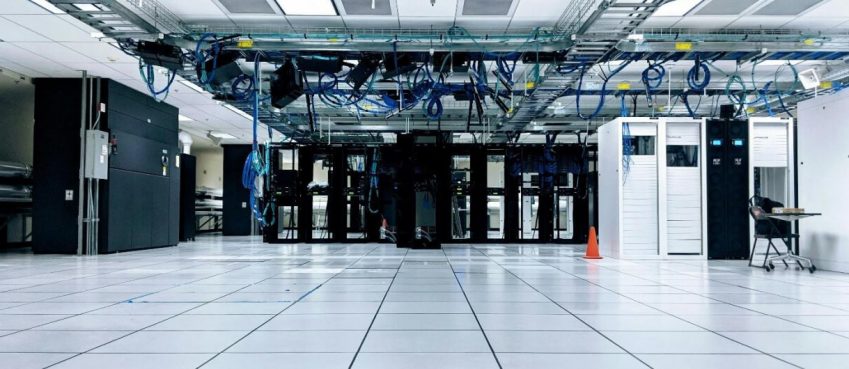
Security in the workplace remains a strategic priority for 2022. The focus is on protecting people, property, and data and that requires a single, integrated approach that includes both physical and information security.
However, one of the biggest challenges facing businesses is identifying and securing ‘the new workplace’. Before the pandemic, security solutions were designed to protect an office or a campus.
The increased adoption of working from home has changed the rules and the security perimeter is now much wider and more difficult to define.
In this article, we consider how key security trends for 2022 can help businesses meet that challenge and provide the highest levels of protection for the workplace — wherever it is located.
Security convergence

Traditionally, physical and information security has been handled by specialist teams working in silos. However, the challenges facing the business in the ‘new workplace’ require greater coordination between separate teams.
Convergence and collaboration between cyber and physical security teams through 2022 will help them integrate and share multiple data sources, improve overall situational awareness and ensure that there are no gaps in security.
It will enable security teams to share knowledge and experience so they can develop coordinated strategies to ensure a faster response to incidents and provide better protection for the business.
Convergence can also reduce overall security costs by eliminating duplication, streamlining and automating separate processes, and reducing the risk of security breaches.
Even with greater coordination between cyber and physical security, business owners should still be completing a workplace security audit regularly essential to ensure that their security meets current standards.
Also read: How To Access Flags In Chrome + 5 Best Chrome Flags Settings
Security for the hybrid workplace
Although working from home was initially seen as a temporary measure during periods of lockdown, both businesses and employees recognized the benefits of remote working.
While some businesses felt it essential to get employees back to the office, others have introduced hybrid working policies that give employees the flexibility to choose where they work.
However, that level of flexibility also makes security more complex. Although combining physical and information security measures provides the highest levels of protection, implementing a physical security strategy specific for every remote worker would prove both costly and impractical.
That makes it important for security teams in 2022 to develop solutions that are relevant to the different scenarios in a remote working environment while adopting a converged approach for the office.
For example, home-based employees may be working on unsecured laptops or other mobile devices, using networks shared with other family members. They may use the public internet to transfer sensitive corporate data.
These practices can open security vulnerabilities that could have serious implications on an organization such as an outsider gaining indirect access to corporate resources.
To reduce vulnerabilities, there will be an increased emphasis on measures such as securing home workers’ devices and networks or deploying VPNs to support secure data transfer.
Also read: Top 9 WordPress Lead Generation Plugins in 2021
Zero–trust security policies
Another trend driven by the rise in hybrid working is the increasing adoption of zero-trust policies during 2022. Zero-trust means ‘trust no one who tries to access data or secured systems’.
Securing access is critical as Research by Entrust found that 61 percent of data breaches were due to compromised credentials, either due to errors or identity theft.
To implement zero-trust, security teams must take several measures, including limiting access through the provision of minimum permissions related to job functions, the use of one-time passwords for three-factor authentication, or replacing passwords with identity verification.
Security training and awareness
Employees need to understand the types of threats they face so that they can identify potential attacks and limit any damage. Security teams need to develop policies that apply to both home and office-based workers and offer convenient forms of training.
Cloud-based security solutions

Adopting cloud-based security solutions will continue to improve and simplify security management through 2022. Cloud-based systems require no physical infrastructure on-site and can be managed from any location with an Internet connection.
So, with cloud-based systems, security teams no longer have to be on-site to monitor systems or respond to incidents.
Looking to the future, it will be essential to keep security systems up to date. Cloud-based systems provide automated updates and alerts to protect against the latest vulnerabilities.
It will also be important to keep security credentials up to date to minimize vulnerability. With the increasing adoption of hybrid working arrangements, this can be difficult. Cloud systems that incorporate higher levels of automation can manage the process and deactivate any out-of-date credentials.
Also read: What Is Beta Character AI? Comprehensive Review + FAQs
Securing the ‘new workplace’
Maintaining the optimum security posture will continue to be a challenge for businesses through 2022.
By adopting policies such as zero-trust, migrating security to the cloud, converging physical and information security, and adopting policies for hybrid working, security teams can provide maximum protection for the business.
Top 10 News
-
01
Top 10 Deep Learning Multimodal Models & Their Uses
Tuesday August 12, 2025
-
02
10 Google AI Mode Facts That Every SEOs Should Know (And Wha...
Friday July 4, 2025
-
03
Top 10 visionOS 26 Features & Announcement (With Video)
Thursday June 12, 2025
-
04
Top 10 Veo 3 AI Video Generators in 2025 (Compared & Te...
Tuesday June 10, 2025
-
05
Top 10 AI GPUs That Can Increase Work Productivity By 30% (W...
Wednesday May 28, 2025
-
06
[10 BEST] AI Influencer Generator Apps Trending Right Now
Monday March 17, 2025
-
07
The 10 Best Companies Providing Electric Fencing For Busines...
Tuesday March 11, 2025
-
08
Top 10 Social Security Fairness Act Benefits In 2025
Wednesday March 5, 2025
-
09
Top 10 AI Infrastructure Companies In The World
Tuesday February 11, 2025
-
10
What Are Top 10 Blood Thinners To Minimize Heart Disease?
Wednesday January 22, 2025







